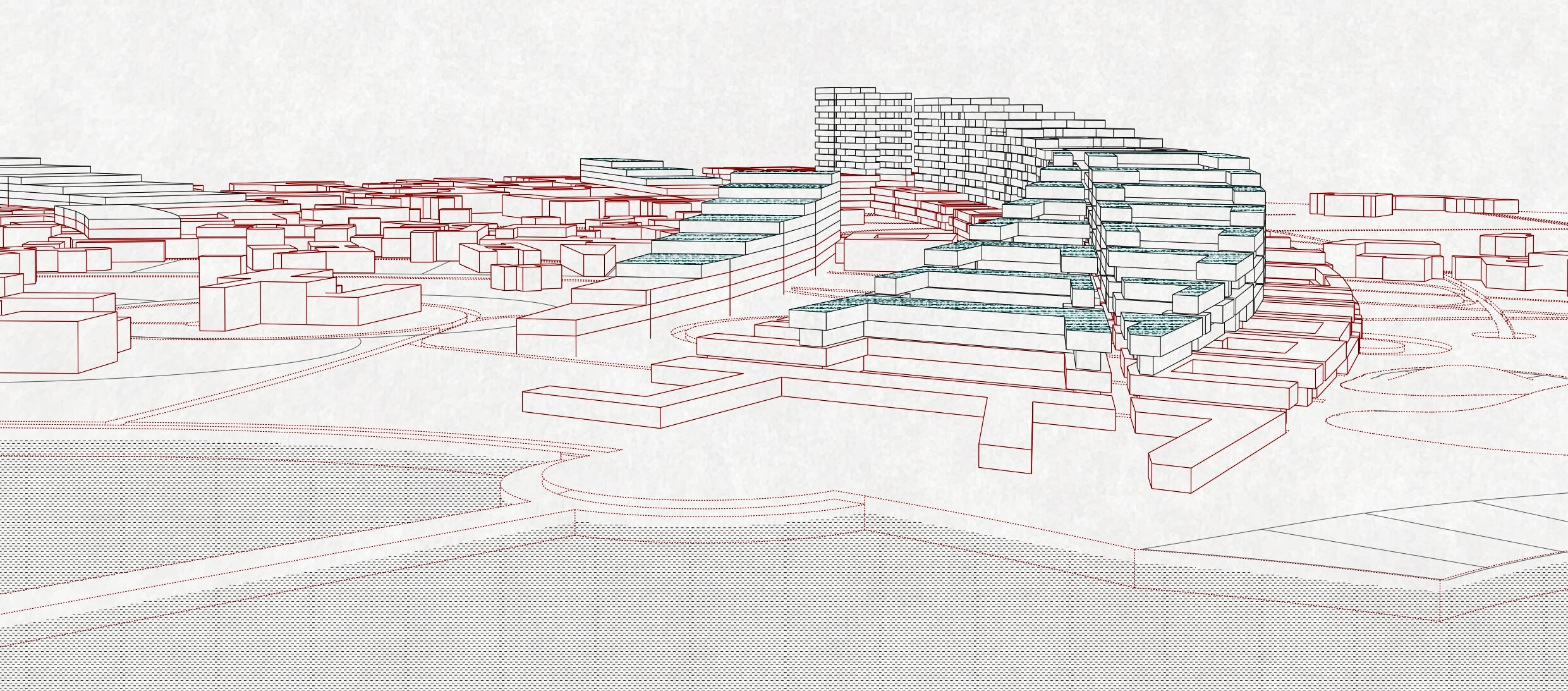
Auroville, India. 2017 Onwards
Planned as an urban project of cohousing clusters, the Line of Goodwill is the first high density compact housing envisaged for Auroville to take a bold urban step, fifty years after its foundation, in the direction of the compact pedestrian city planned by its Chief architect Roger Anger. To compensate for the low-rise housing in the green city of Auroville, and still provide the required compactness and density, Anger introduced urban structures that he called Lignes de Force, the most distinct elements of the city concept. These extremely long porous structures rise tall above the rest of the city at one end, and gradually slope down over the entire length to reach the ground at its other end. In the residential zone, the towering heights are located towards the periphery of the city, their terraces facing the city centre. These structures enhance the dynamic spiraling movement of the town plan, absorb density with a minimum of circulation on the ground through vertical development and provide vistas and views of the city itself from various viewpoints that would otherwise not be visible in this relatively flat land.
The quest was for a new high-density typology for ‘urban eco-communities’ that is neither a tower nor a uniform low-rise development but looks at collective housing and related social infrastructure as a ‘hillscape for coexistence’. The aim was to envision a vibrant and integral solution to various urban challenges through an integral rethinking of architecture and urban design theoretically as well as practically, addressing environmental, social and economic sustainability holistically.
Line of Goodwill stands as alternative to the sprawling residential structures that necessitate motorized transport, and prevent the critical mass needed to realise public transport as a city infrastructure giving the Auroville dream a new boost and creating ample accommodation for arriving people of a new generation. It concentrates the needed infrastructure while serving as a prototype for residential development in urban India with its given land crunch, redefining collective living centered around pedestrian mobility, integration of renewable energy and integrated water management concepts and innovative opportunities for sharing.
The cluster of buildings stretch over 800m starts at the entrance to the city, as a gateway for visitors including hotel facilities with an 18 storey height and radially descends towards the city center and reaching the edge of the central lake. It accommodates 8000 inhabitants and includes the first steps towards a public transportation system.
The large scale of the project allow radical and integral rethinking of habitat, and these include social, environmental and economic aspects: creation of community through designed clustering to create a sense of safety and familiarity and health inter-dependence; creation of a vibrant street life for spontaneous exchanges at public space at upper levels too; diversity of ‘healthy household mix’ of residents and corresponding richness of collective living and the human potential; the quest for addressing human scale, intimacy and well-being despite the high rise context; increased opportunities to share chores and childcare, liberating personal time for improving the quality of human life; collective governance through personal engagement; beyond ownership of land or assets and establishing a sense of the commons; variety of individual’s contribution to collective life through time, money, activity or engagement; opportunities for participation in the construction as a collective process; development of appropriate building technologies for high rise with local materials and skills boosting local economy, while reducing embodied energy and pollution and awareness of impact on health; alternative strategies to debt financing through circular economy; pedestrian centric urban development with mixed use and proximity to places of work, recreation and social infrastructure, with connections to collectively owned bicycles and non-polluting vehicles; integral management of water and waste water, from direct reuse to irrigation; solar passive principles for climatic comfort, with energy efficient appliances and integration of renewable sources of energy; ‘no-waste’ management of daily life including integration of onsite compost production; prevention of noise pollution including during construction; and integration of urban farming opportunities on roofs and facades along with the related irrigation systems.
Category:
Urban Projects